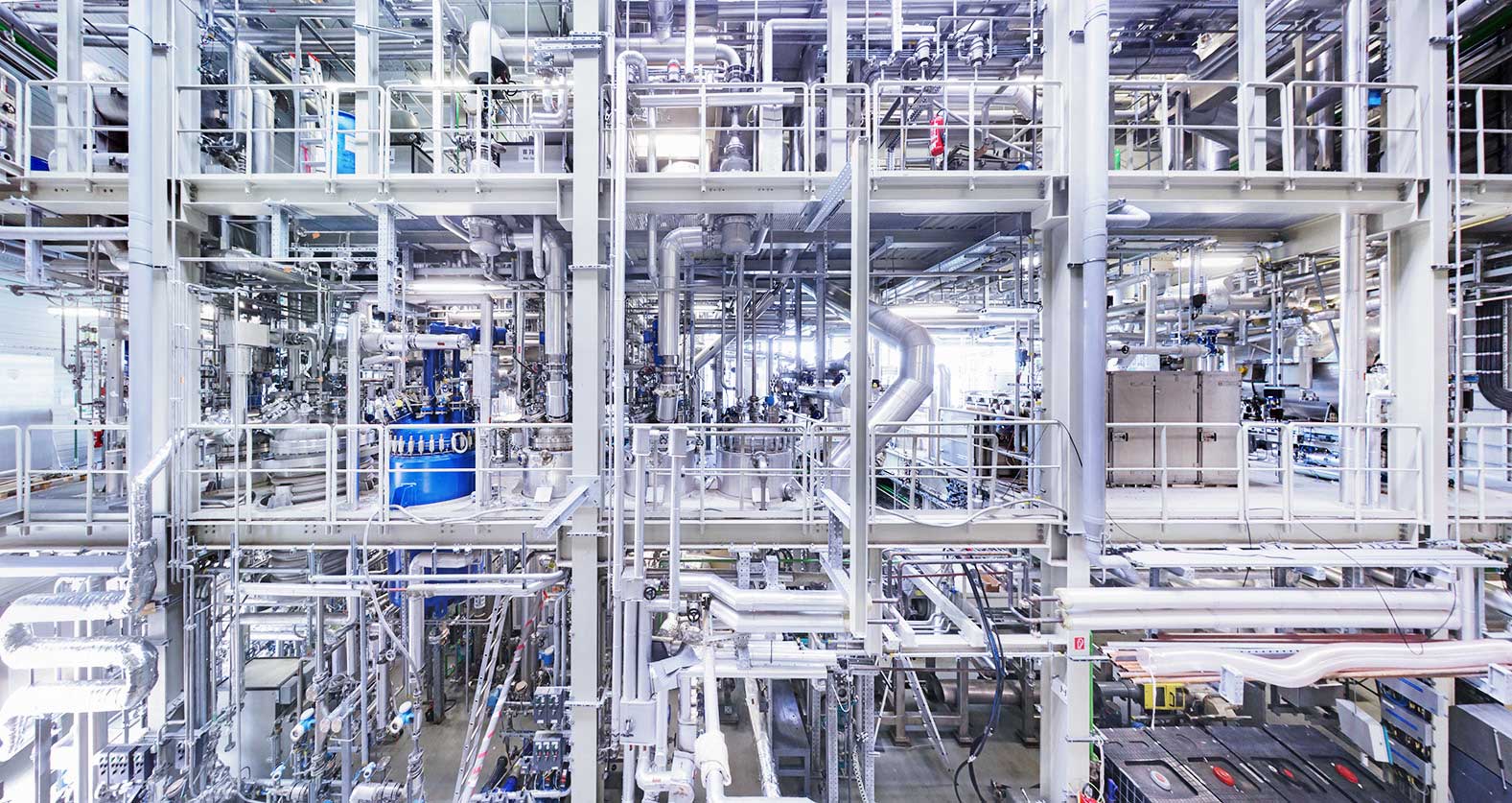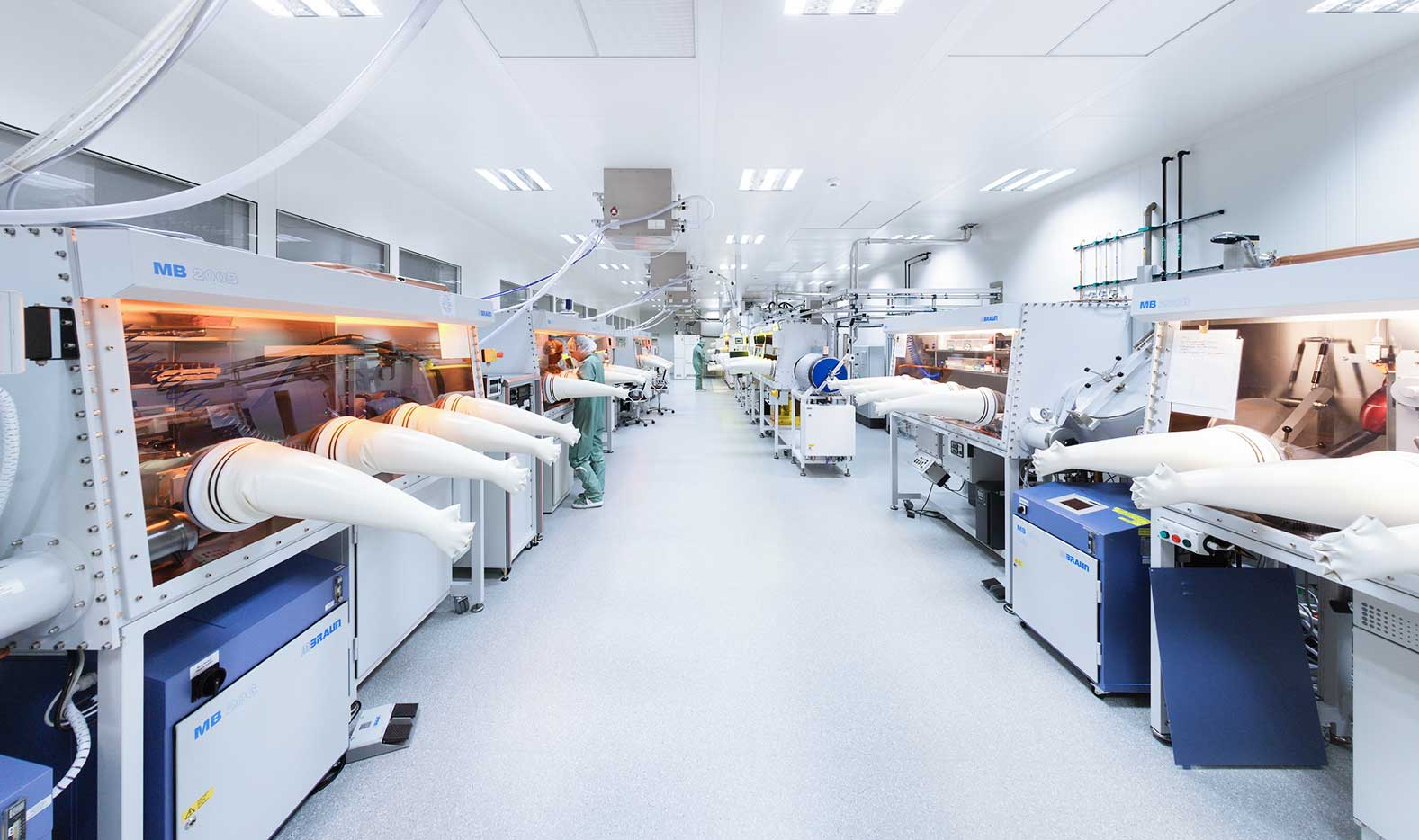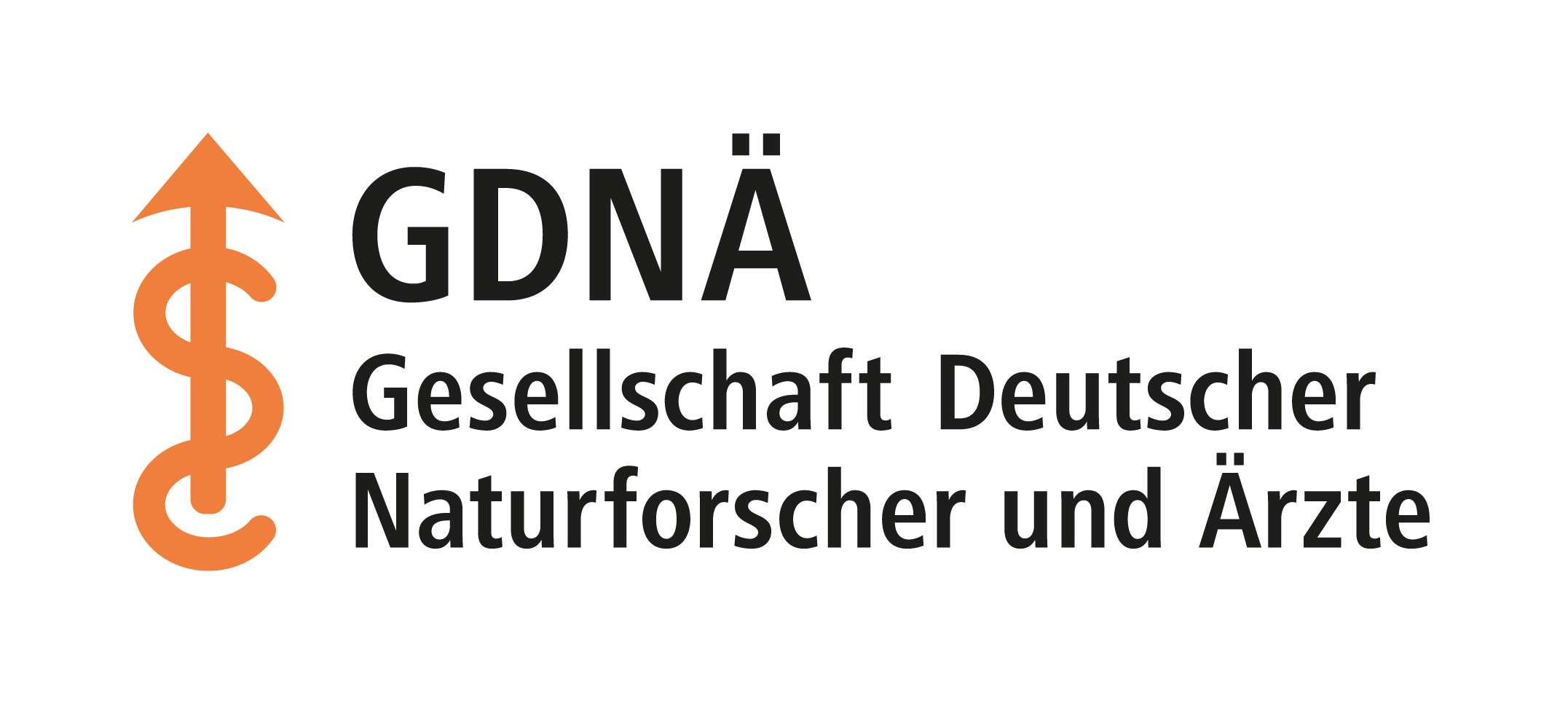“The student programme is unique and convincing”
Alexander Böker, polymer researcher and director of the Potsdam Fraunhofer IAP, on the 2023 Nobel Prize in Chemistry, sustainable innovations from his institute and good prospects for the GDNÄ.
Professor Böker, a few days ago the Nobel Prize in Chemistry was awarded for fundamental contributions to nanotechnology. Did the Nobel Committee make the right decision?
Yes, absolutely. Research on nanometre-sized quantum dots is of enormous importance for our modern world. The tiny particles have become indispensable in many everyday applications, for example in computer and television screens, in light-emitting diodes, solar cells or in medicine. And with the three prize winners Louis Brus, Alexei Ekimov and Moungi Bawendi, the right people have been honoured. But as is often the case with the Nobel Prize: this time, too, there are a few colleagues who might have deserved it equally. Unfortunately, the statutes allow a maximum of three laureates per discipline and that is not likely to change any time soon.
You yourself have done research in this field for many years, and at your Potsdam institute several working groups deal with nanoparticles. What topics are they working on?
At the Fraunhofer IAP, for example, a rapid test for breast cancer is being developed. Brightly glowing quantum dots attach themselves to cancer cells in a blood sample and mark them. We already know that this method can detect tumours in their early stages and track them on their way through the body. Now the aim is to make the method even more precise in order to avoid false alarms and to bring it into clinical trials in the longer term. To this end, we are working together with the University Medical Centre Hamburg-Eppendorf. We have a world-renowned pioneer of German nanoparticle research, Professor Horst Weller from the University of Hamburg, to thank for this research direction. He is the founder of the Centre for Applied Nanotechnology, Fraunhofer CAN for short, which has been a Fraunhofer Centre since 2018 and is part of the Fraunhofer IAP.

© Fraunhofer IAP | Till Budde
Synthesis pilot plant of the Fraunhofer Pilot Plant Centre PAZ for polymer production and processing in Schkopau.
Are there other innovations from your house that have to do with this year’s Nobel Prize in Chemistry?
For example, there is a process for encoding high-quality goods with quantum dots. They are applied to the packaging and are used for unique identification and quality control. The process does not require an internet connection and is therefore also suitable for use in poorer parts of the world. We are currently negotiating with a company that would like to further develop our prototype and test it in small series in order to bring the mature product to market. We often follow this pattern, which is a classic path at Fraunhofer.
Please describe this path in more detail.
The starting point is a good idea, which often comes from the Fraunhofer team. This is followed by intensive basic research in our laboratories. It can lead to prototypes for innovative materials and products or to new manufacturing processes and methods. As soon as our results prove the feasibility of the idea, we approach selected companies and try to win them over for cooperation. If desired, we accompany the company until the product or process is ready for practical application. A current example is the search for a tear-resistant, transparent, elastic film made from renewable raw materials that can also degrade in the environment if necessary. It is to replace the rigid films known as the crackling outer packaging of blister trays for fruit and vegetables. Together with an industrial partner, we have developed a flexible version made of polylactic acid, which is produced from maize. It could soon be on the market.
So no fossil raw materials are needed for the new film. But does that make it an ecologically sound product? After all, maize is used elsewhere as food and animal feed.
I have to elaborate a little on that. Our big goal at the Fraunhofer IAP is the reusability of plastics within the framework of a circular economy. Valuable packaging should be turned into valuable packaging again and not into park benches. But this is only possible if a product consists of one material and not a mixture of materials. In the case of polylactic acid materials, we have succeeded with a trick that a team of chemists, physicists and product designers at the IAP has worked out. If petrochemically produced materials are gradually replaced by bioplastics in the future, the consumption of renewable raw materials will be kept within limits. Our polylactic acid film, to stay with the example, will in no way jeopardise the supply of maize to other areas of life.

© Fraunhofer IAP | Till Budde
In the clean room: Pilot plant for printed electronics at the Fraunhofer IAP.
As a Fraunhofer Institute, the IAP is required to generate one third of its income from economic cooperation. Does that work?
Yes, we manage well. In Berlin and Brandenburg there are many small and medium-sized companies that deal with plastics and we maintain intensive contacts with many of them. With a total of seven locations in the region, we are close to our customers. If you want to test something quickly, you are never far from the next IAP technical centre. There, new developments can be tested on a scaled basis. This is very important, because not everything that works on a milligram scale also works on a kilogram scale. In our polymer production plant in Schkopau, we can even produce on a tonne scale. What our customers also appreciate is the fact that Fraunhofer thinks economically. This is how long-standing cooperations come about, some of which go back to the founding days of the institute.
For the next meeting of the GDNÄ in Potsdam in 2024, you have taken over the office of managing director in the field of economics. How are you approaching the task?
A few days ago, we activated our Institute network and asked companies in the region for support for the Assembly. This can be done through personal participation and contributions to the discussion, but also by subsidising the costs of this event with several hundred participants. I am very confident that many companies will participate.
What makes you so optimistic?
For example, I am convinced by the unique student programme of the GDNÄ and I think it will also inspire our cooperation partners. The programme brings together young people with a keen interest in the STEM subjects – and they are in high demand everywhere today. The interdisciplinary, easy-to-understand lectures and discussions at the GDNÄ conferences are also attractive. Something like this is missing in the German science landscape. The support for the Potsdam meeting will therefore be great, of that I am convinced.

© Fraunhofer IAP | Kristin Stein
Professor Alexander Böker, Director of the Fraunhofer IAP and Chief Executive Business for the GDNÄ Conference 2024 in Potsdam.
About the person
Alexander Böker has been Director of the Fraunhofer Institute for Applied Polymer Research IAP and Chair of Polymer Materials and Plastics Engineering at the University of Potsdam since 2015. From 2008 to 2015, he was Deputy Scientific Director of the DWI – Leibniz Institute for Interactive Materials in Aachen. In 2015, he received a Consolidator Grant from the European Research Council (ERC). He is currently the spokesperson for the Fraunhofer flagship project “Sustainable, simulation-based biobased and biohybrid materials” and the head of the Fraunhofer Cluster of Excellence “Programmable Materials”. He also acts as co-spokesperson for the strategic Fraunhofer research field “Bioeconomy”. Alexander Böker has published 175 peer-reviewed publications and 16 patent applications. With a focus on sustainable innovations at the interface between biology and polymer science, he gave the IAP a new direction. Accordingly, Böker’s own research group focuses on the integration of biological functions in polymer materials and the controlled self-organisation of colloidal and polymer systems.

© Fraunhofer IAP
Headquarters of the Fraunhofer IAP in the Potsdam Science Park.
The Institute
Almost 300 experts work at the Fraunhofer Institute for Applied Polymer Research IAP, compared to a good hundred when it was founded in 1992. The IAP emerged from the renowned Institute for Polymer Chemistry (IPOC) of the Academy of Sciences of the GDR in Teltow-Seehof. At the IAP’s headquarters in Potsdam-Golm and at six other locations, the focus today is on the development of sustainable materials, processes and technologies with the aim of advancing the energy transition and climate protection, mobility and health care.
Weitere Informationen:
